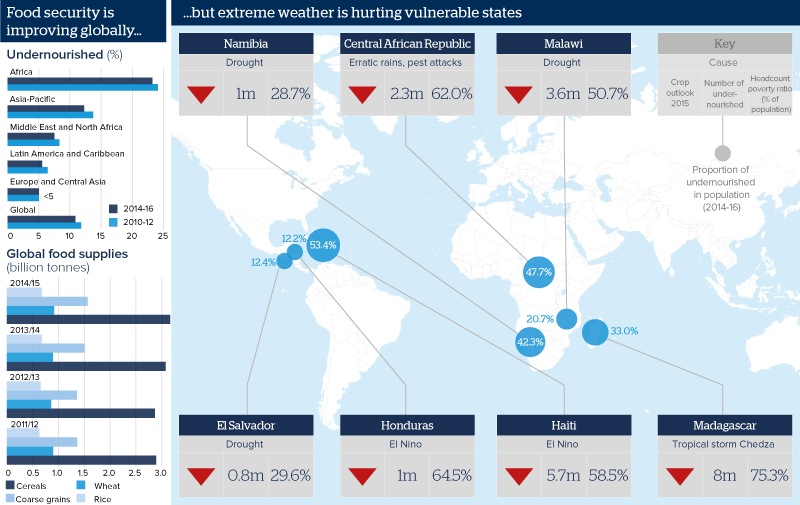‘Hot spot’ states temper global food security progress
Extreme storms and droughts have exacerbated food insecurity, despite global improvements

Source: FAO, World Bank, Oxford Analytica
Outlook
Globally, the number of ‘undernourished’ people (or those unable to meet basic nutrition requirements) is expected to fall to 795 million in 2015 from 842 million in 2011-13. This is due to increased global supplies of staples and lower prices, which dipped 20.7% year-on-year in April, according to the UN Food and Agriculture Organisation. Declining poverty rates, especially in East Asia, are boosting purchasing power.
Yet extreme weather events pose increasing risks to agricultural output. In developed countries featuring strong state capacity to import, store and manage supplies, such as the United States, aggregate food security is likely to be relatively unaffected. Where such capacity is already lacking and populations are poor, floods and droughts will deepen humanitarian crises.
Impacts
- Climate change could increase the frequency of extreme weather events, making food crises more erratic and deeper.
- Illegal fishing by Chinese vessels could spur Sinophobic sentiment in West Africa -- by denuding scarce protein sources.
- Grain imports by China will continue to rise, both for animal feed and to meet higher state grain reserve targets.
- Conflicts, eg in the Central African Republic, will exacerbate food insecurity by disrupting harvests and distribution chains.